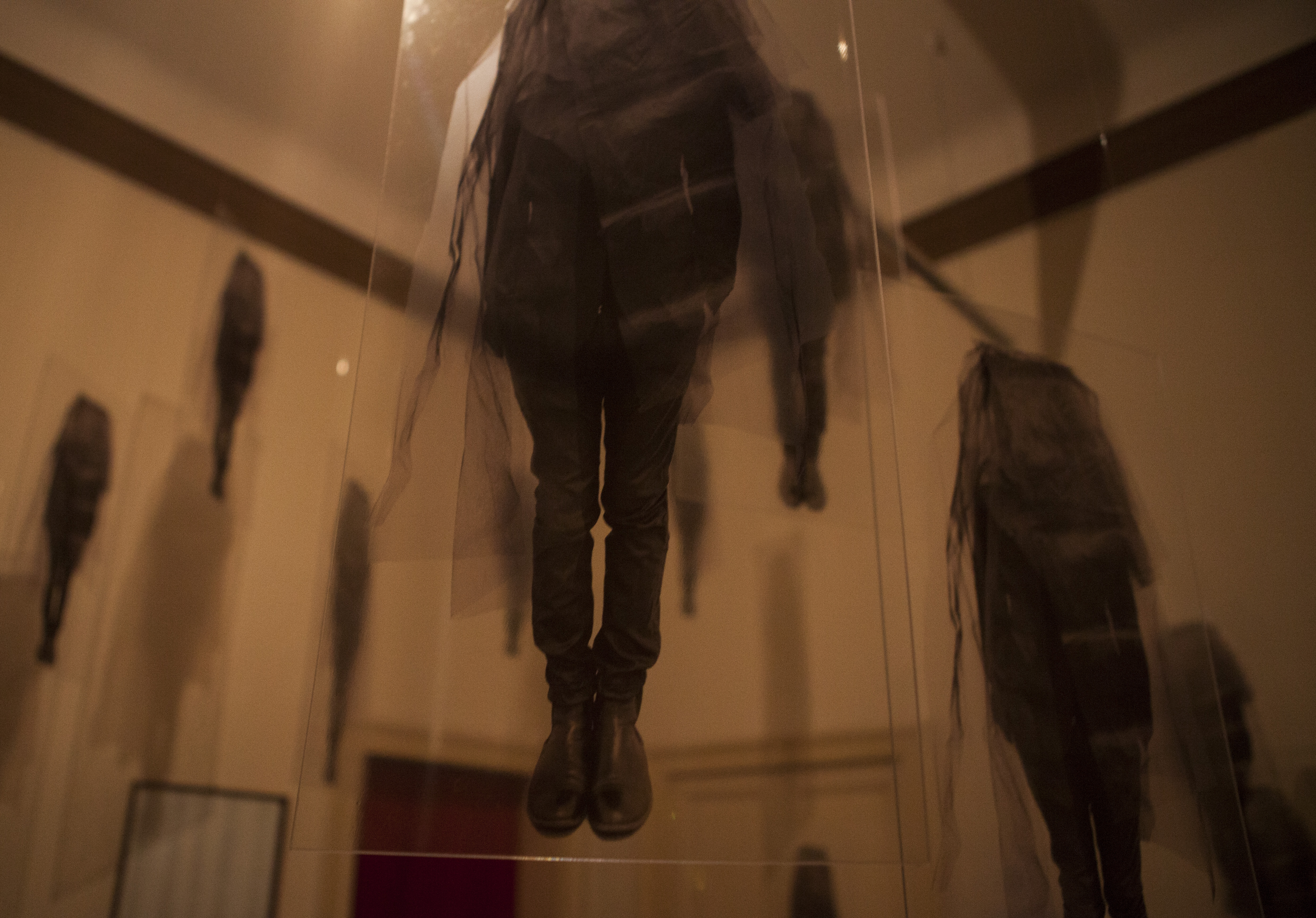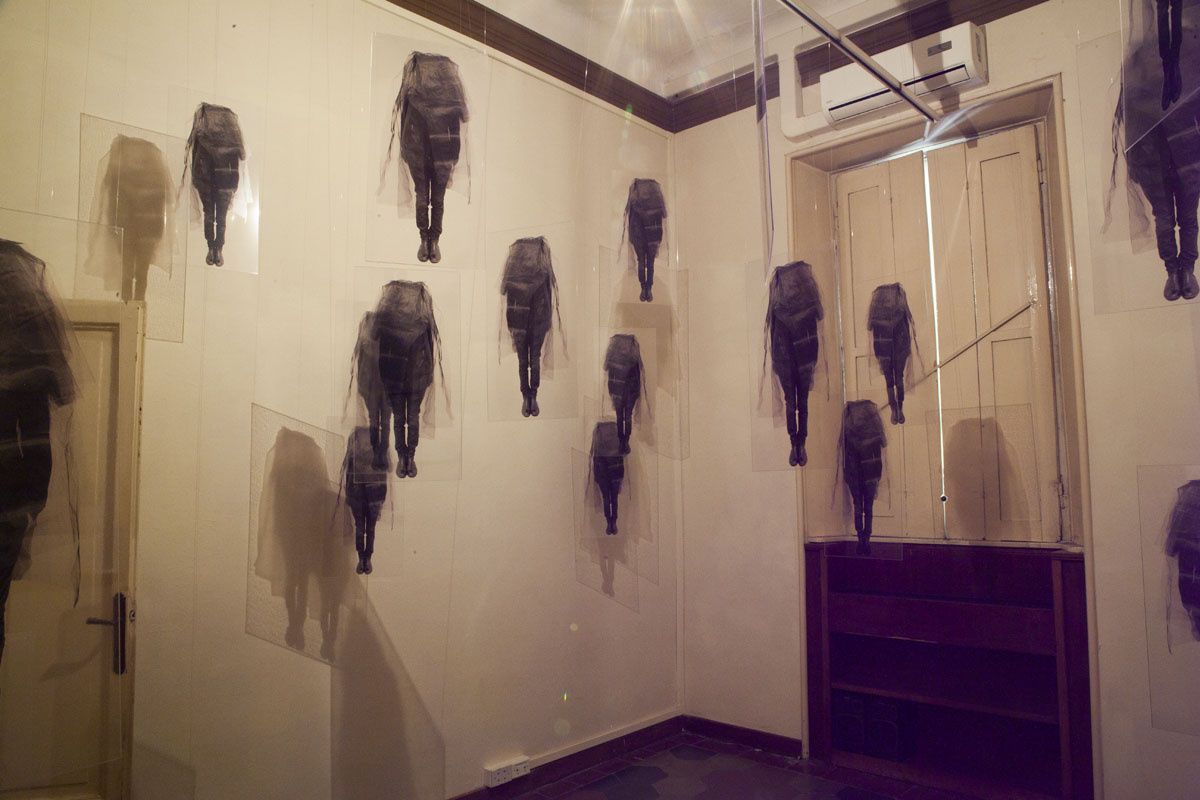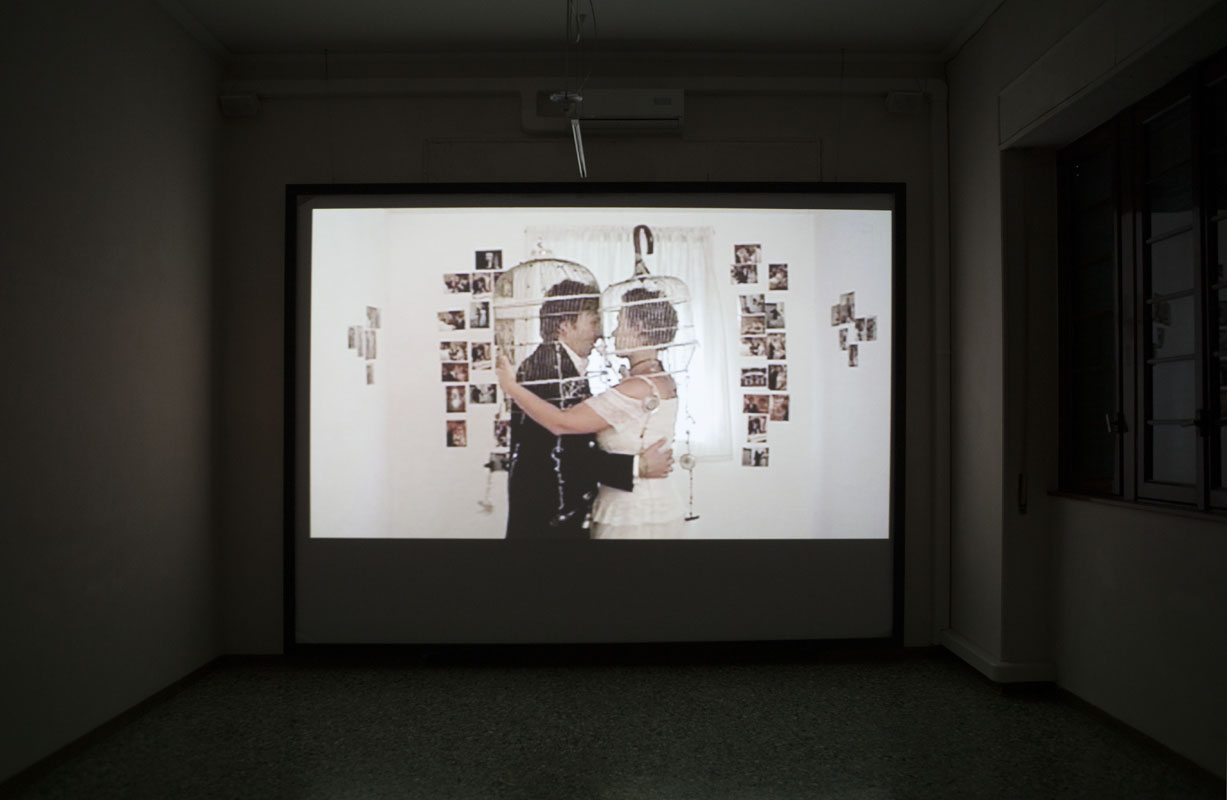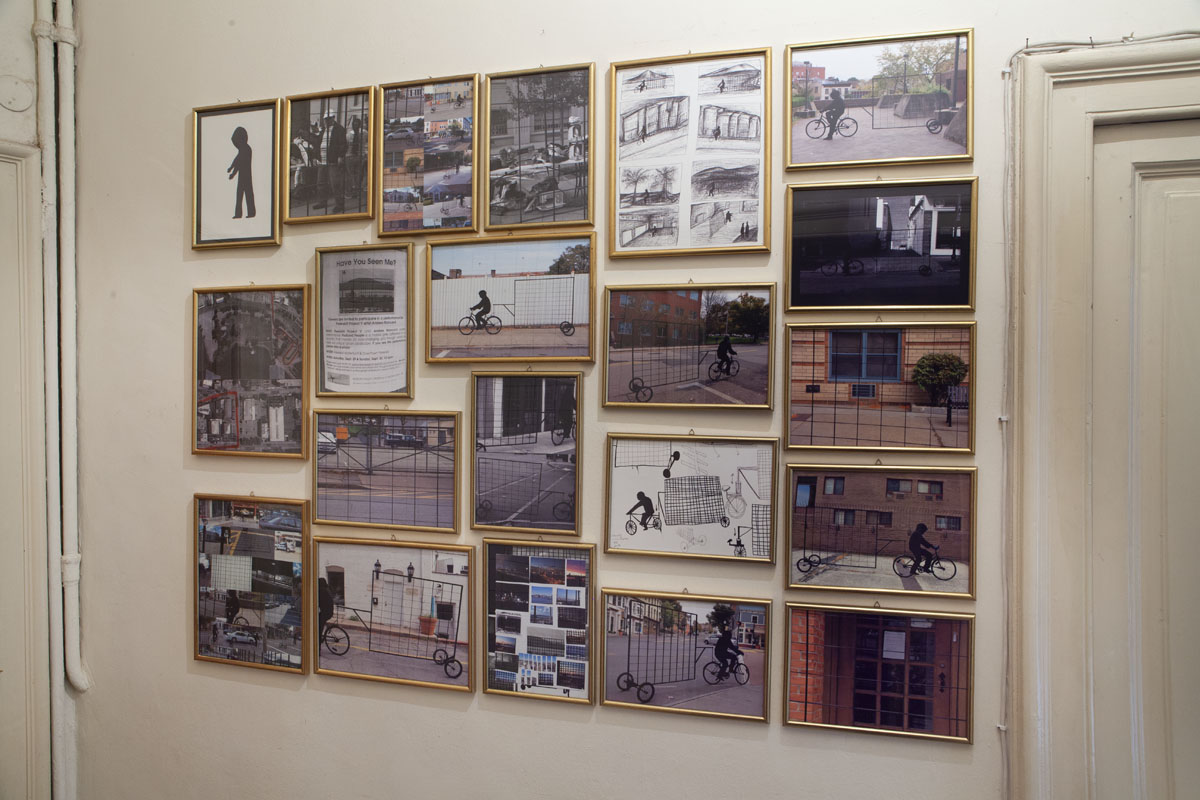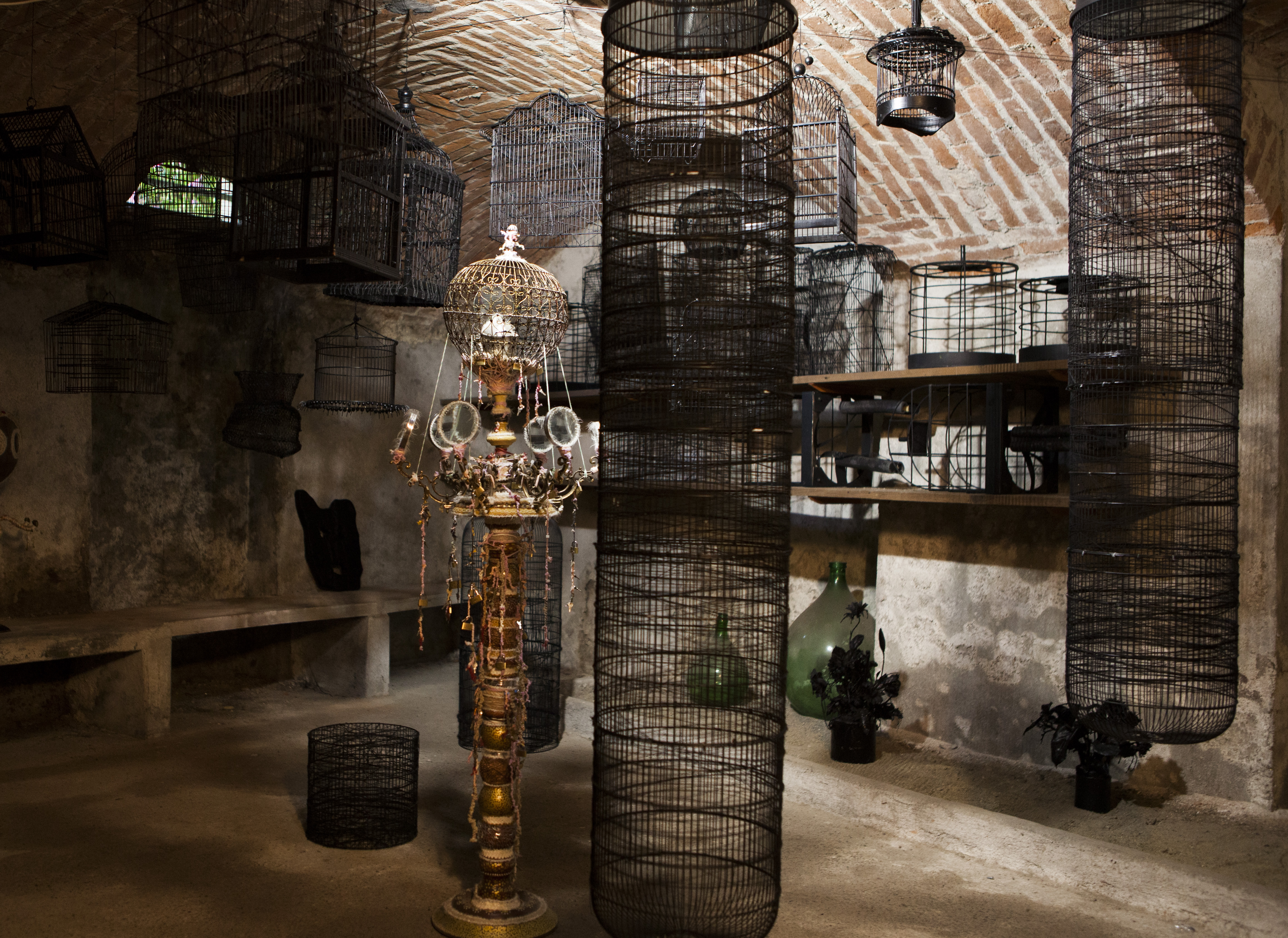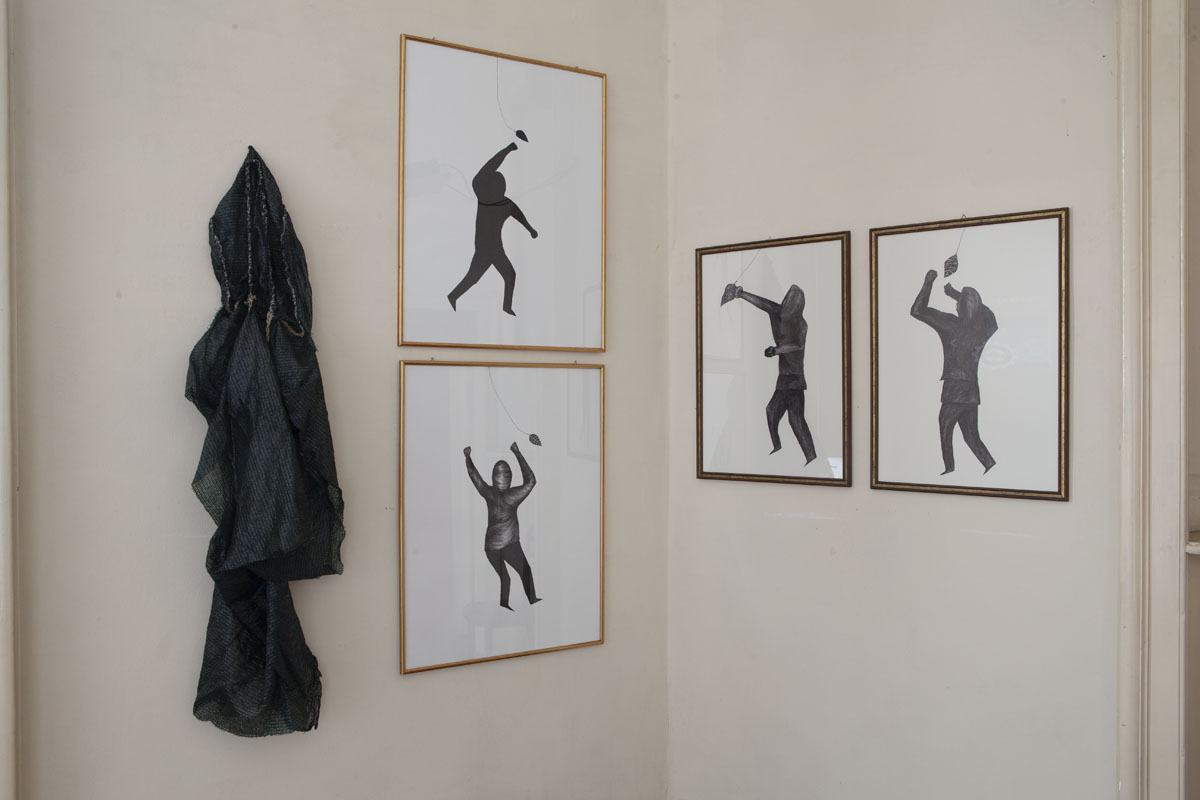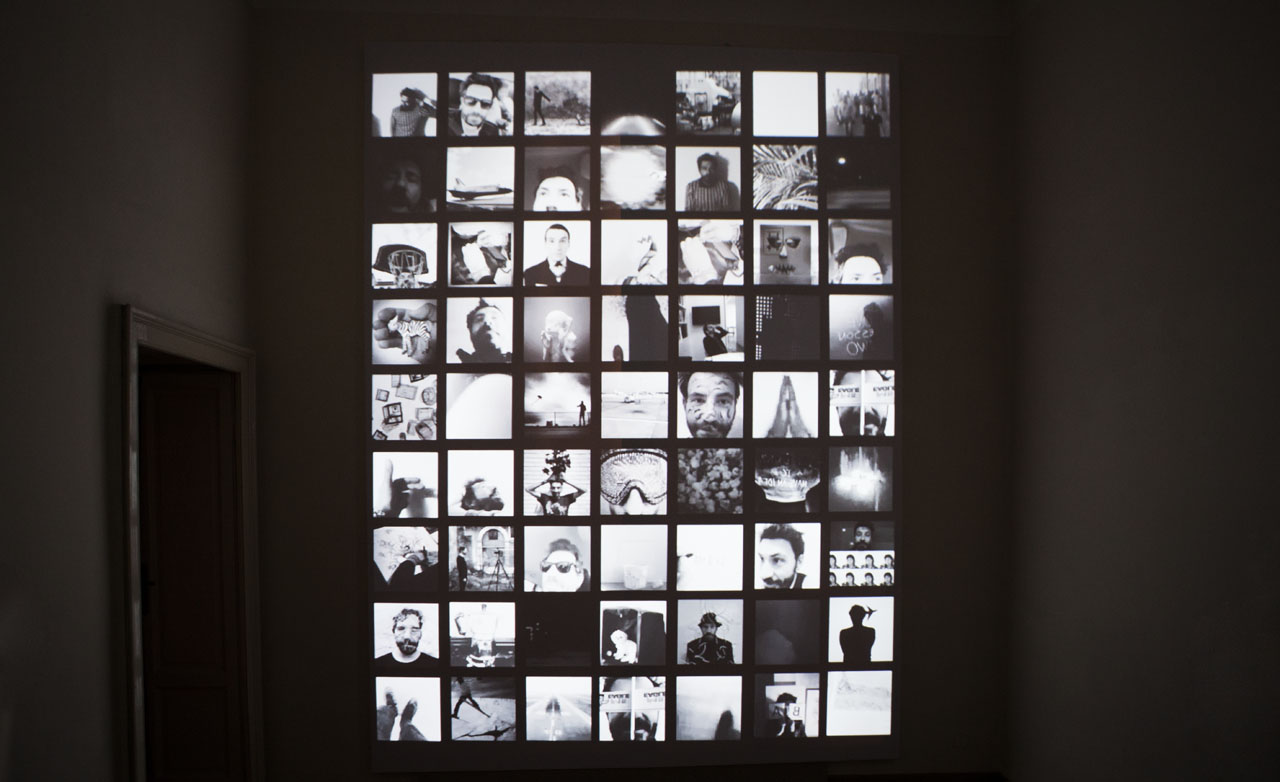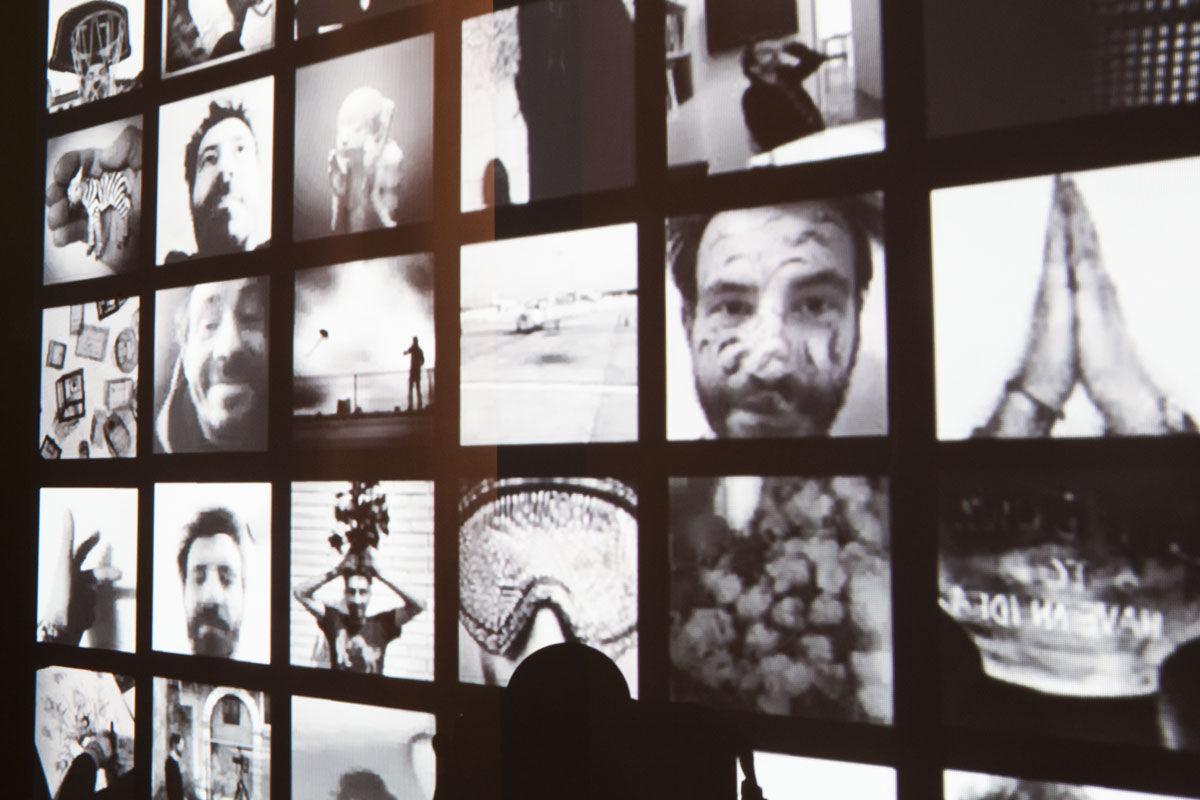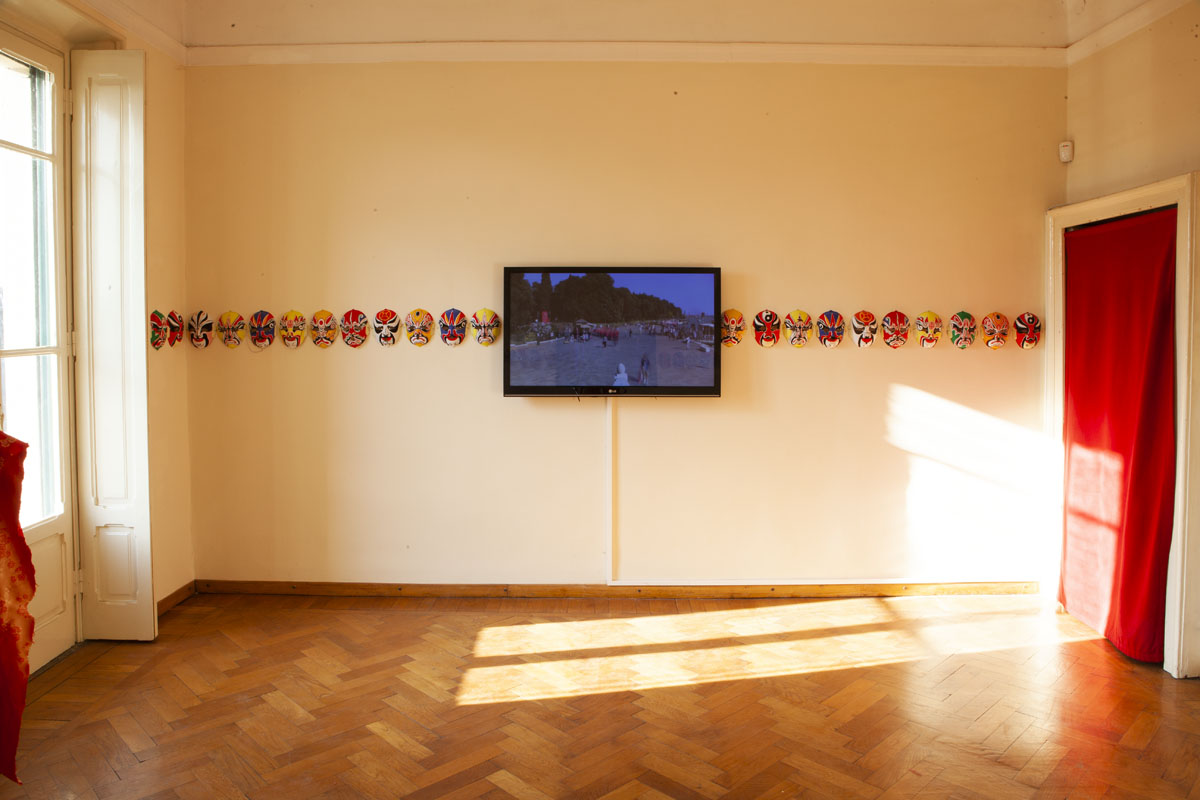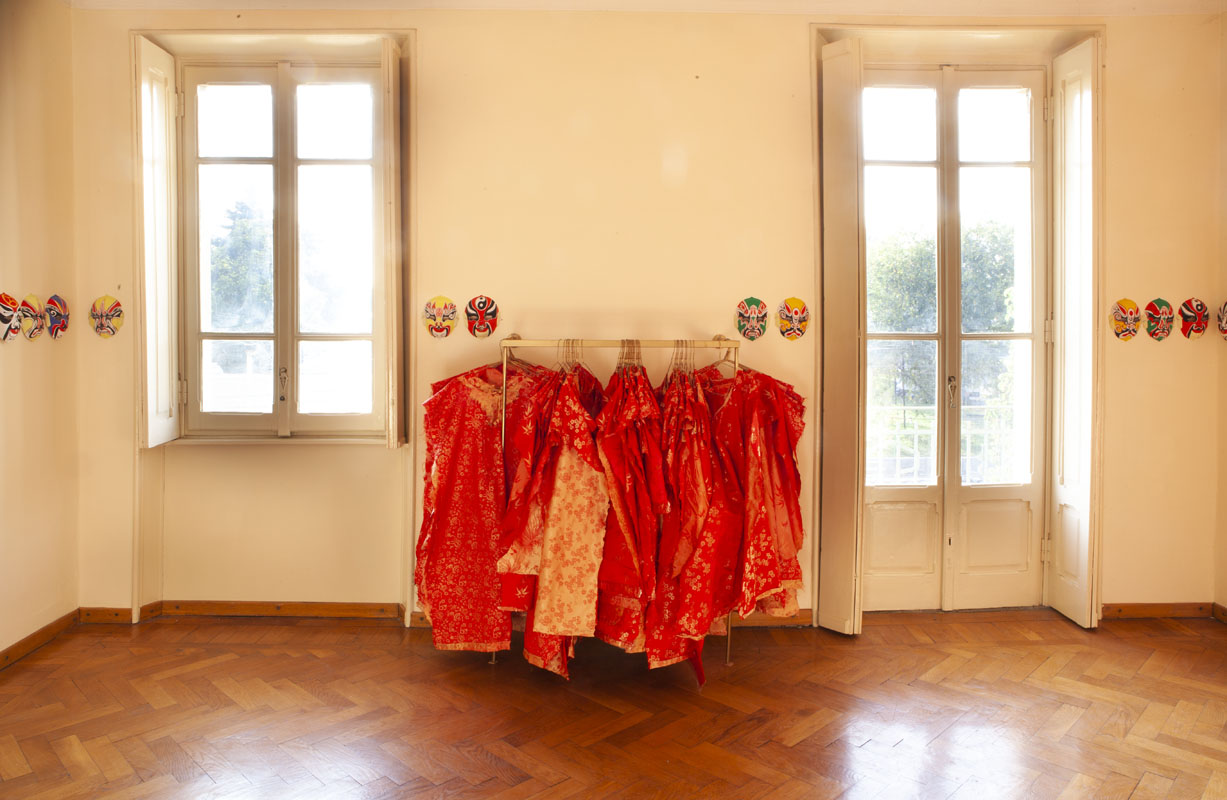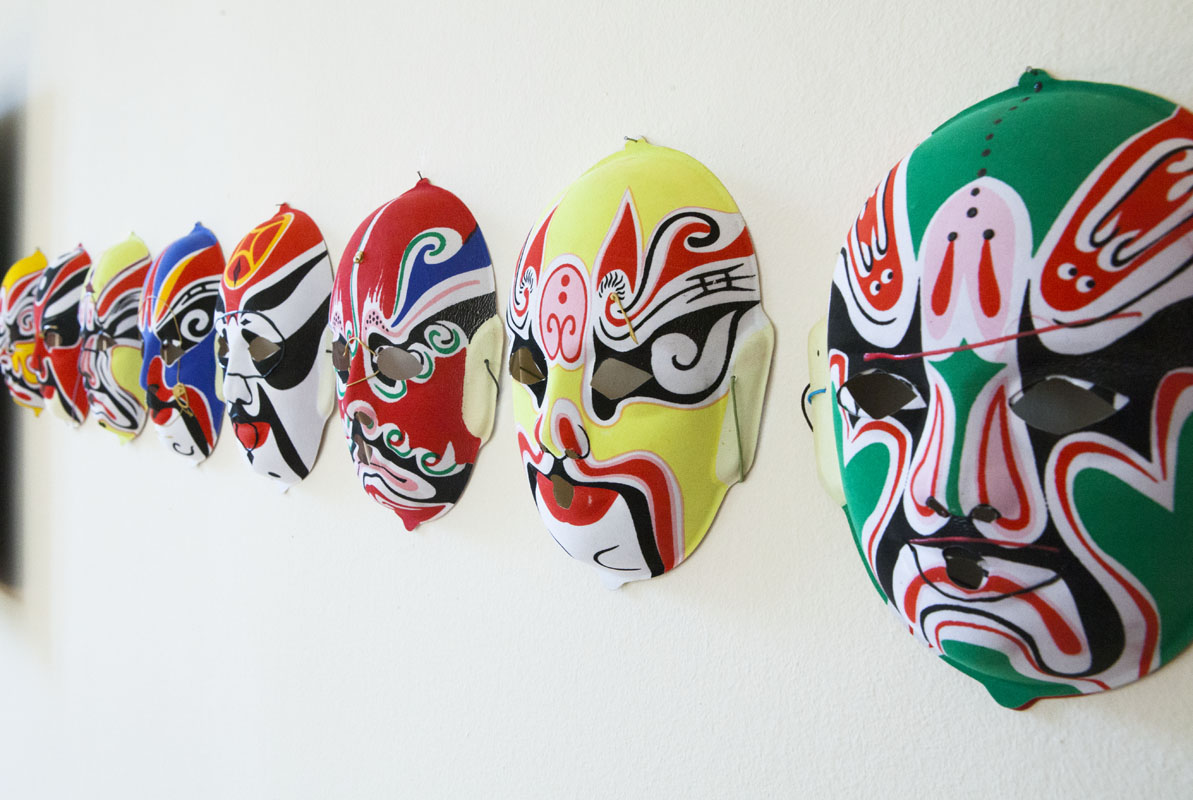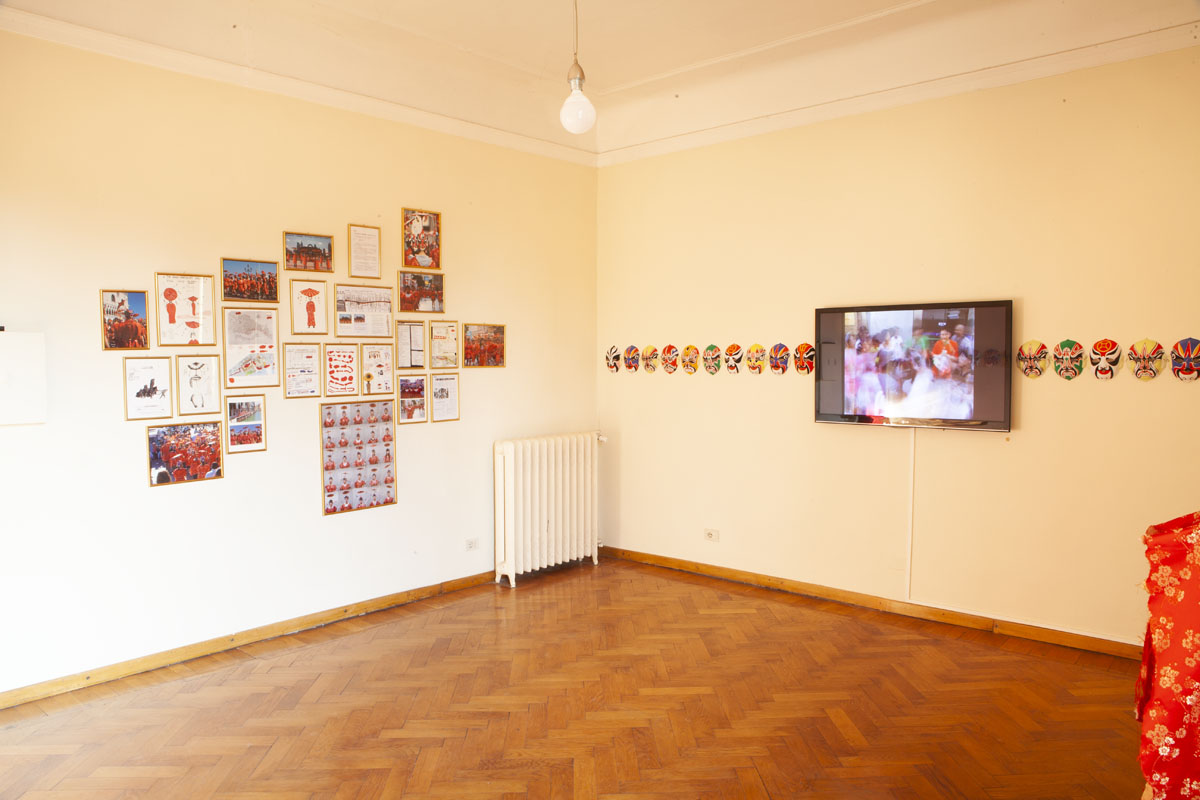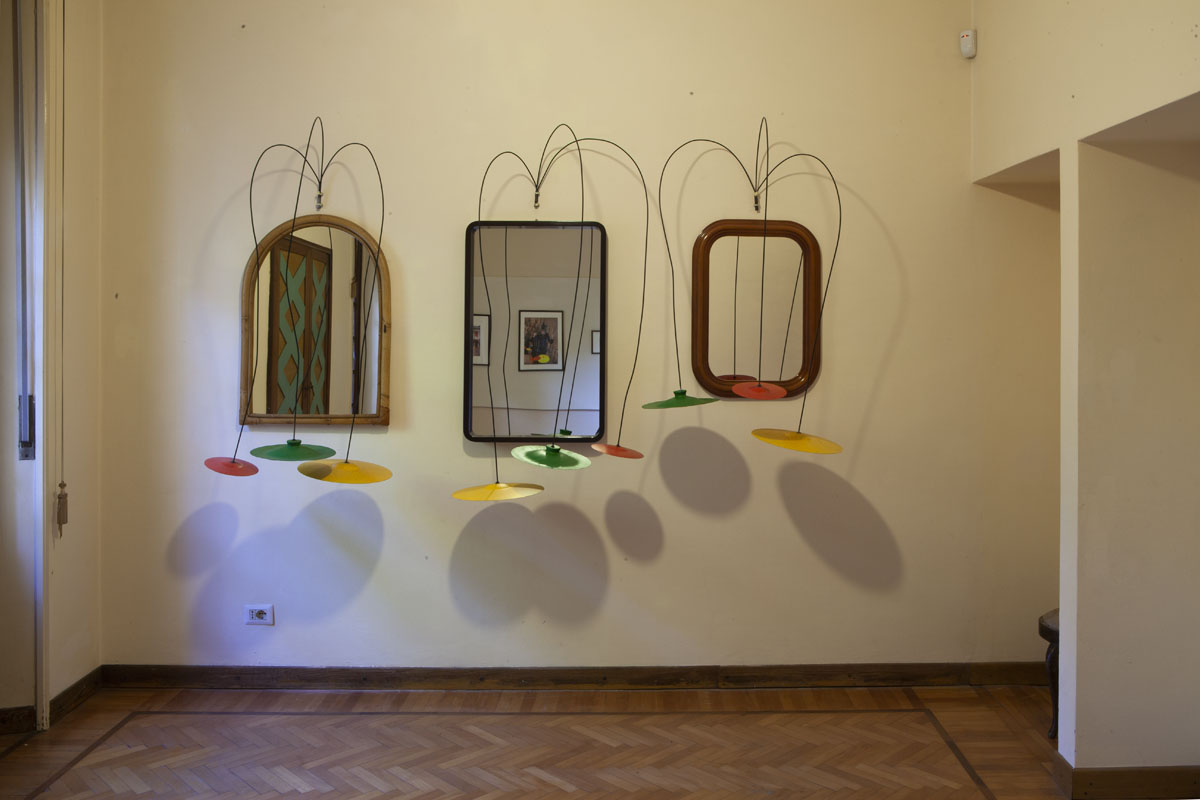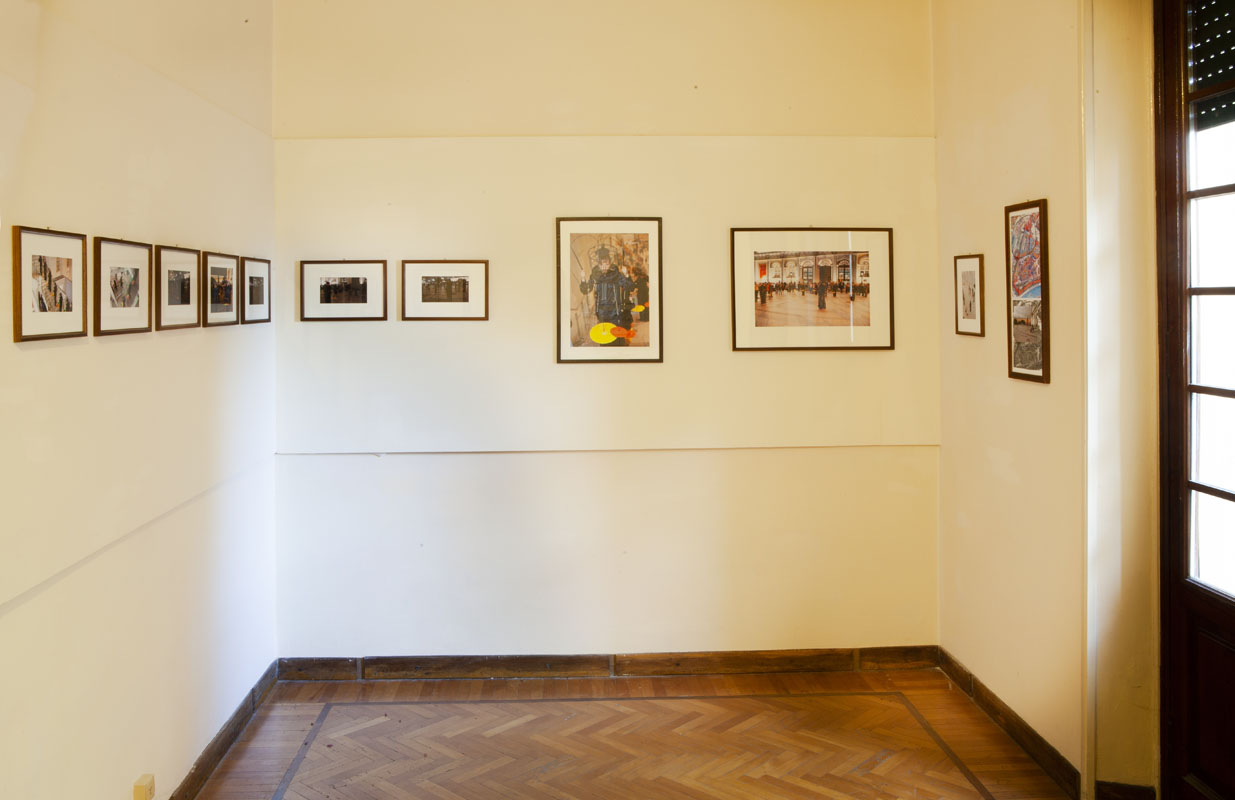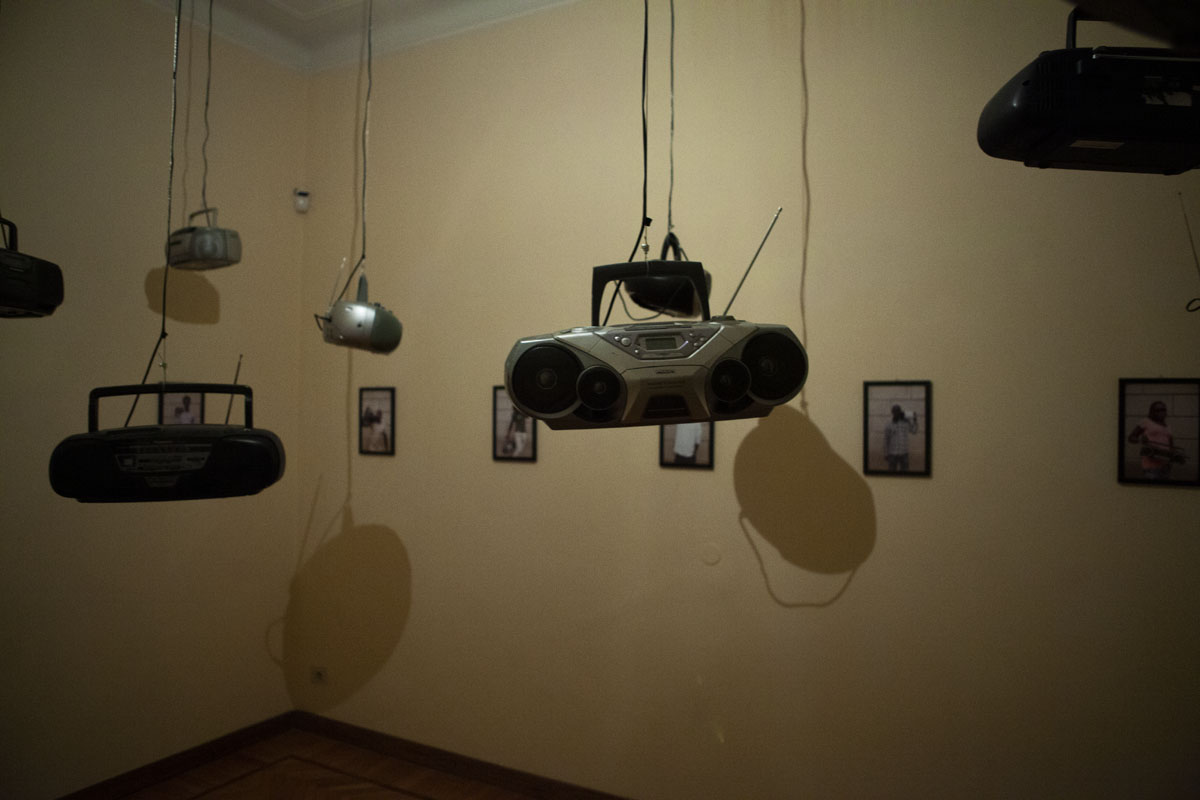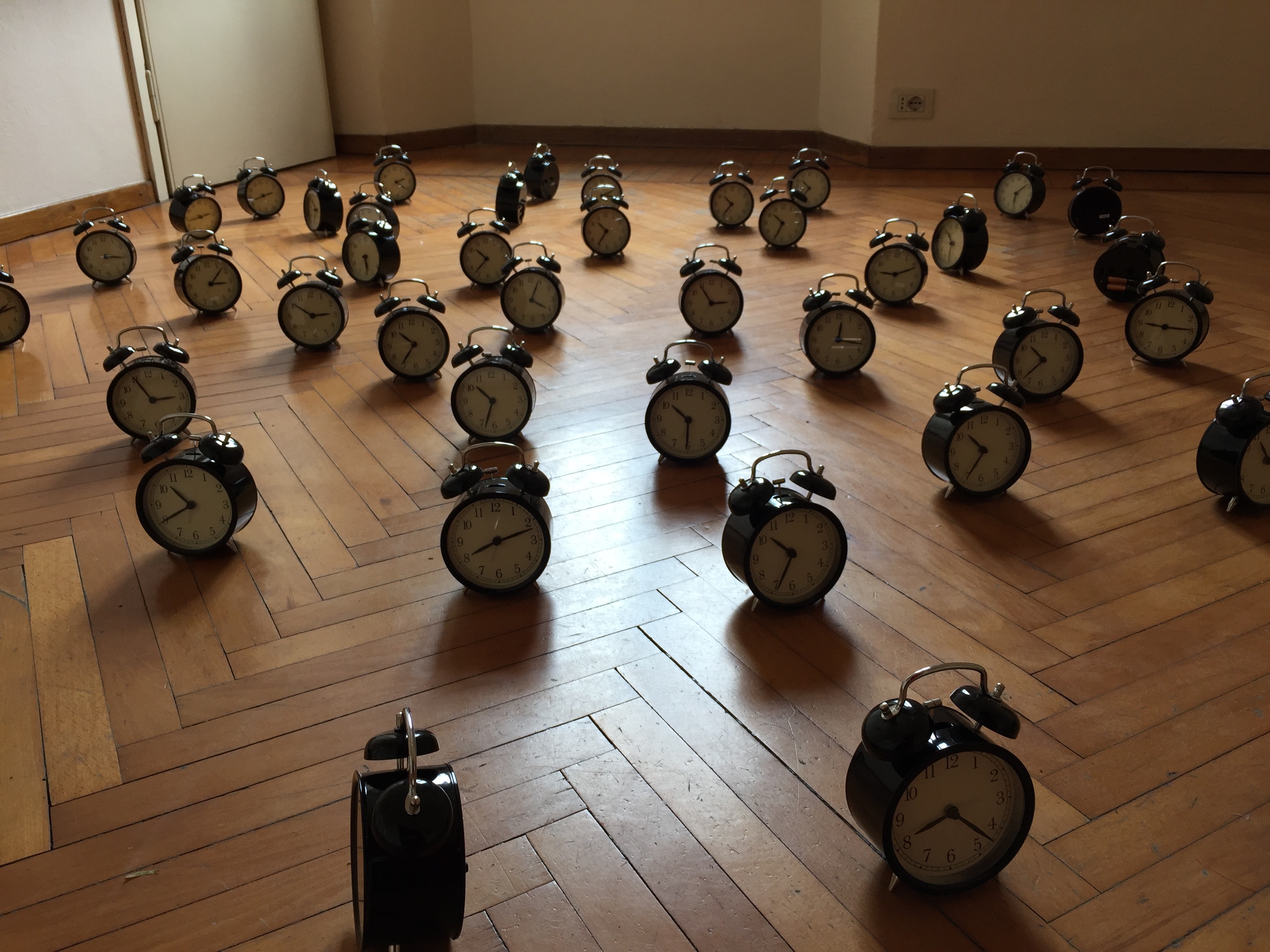YOU AND MYSELF
Andrea Bianconi
Curated by Luigi Meneghelli
Casa Testori
21 May – 22 October 2016
YOU AND MYSELF
Luigi Meneghelli
[…] How does all the plastic-pictorial work of Andrea Bianconi present itself if not as the obsessive attempt to gather, accumulate, and mix together objects and signs saved from being lost: a jumble of old things, out of fashion (or out of use), recovered in toyshops, in antique markets (or in battered dictionaries)? The act of moving, choosing and arranging already gives rise to performance, to behavioral actions. The artist puts aside his ego, and thus his body, as direct expression. But in the wandering of the gaze and of the exploration he manifests a sort of obsession or mania: a “surfeit of desire”, in the attempt to save something of the world from the inexorable flight of time. It is what Calvino defines as “the redemption of objects”, of the banal. In fact, Bianconi takes this operation further, to its final consequence, connecting the massacre of found objects in a romantic, surreal cascade which establishes temporary links and unexpected similarities, hidden correspondences and secret meetings between the various elements. His work is an infinite referral to a “collection”, vitiated by an almost pathetic fragility, exposed as it is to movement, change and multiplicity. A referral to an absurdness that can open new paths of the imagination, without imposing univocal ideas. It has always been like this: against schematism, paradox and play produce new visions. But why, at this point, does the artist enter the stage dressed elegantly with white gloves similar to those of a magician (as in the performance Sound of a Charmed life, staged in 2010 in Prague, Rome and Houston)?
Because he starts to touch and shake the “flood of objects” until he eventually obtains unusual sound vibrations, dull noise effects? The most immediate answer might be: in order to give voice to that which can no longer speak, to give voice to what has become mere waste, scrap.
However, if we observe all the disruption of the body (the nervous, sudden movements and almost graceless gestures) we might also see a desire to return to the original chaos (as in a piece by Trisha Brown), or even more the desire to con-fuse the individual “I” with the collective “I”, to leave one’s imprint on things, recognizing one’s self in them, as in a mirror.
[…]
So where has the artist gone? Is it Bianconi’s intention to adopt the discreet art of knowing how to disappear in order secretly to observe the world? The artist himself has said: “I always want to be in a different place”, perhaps “in somebody else’s house, to be able to take possession of their things, their books, their memories”. Does he intend to express the ill-concealed need for his own identity to take possession of otherness, for the “I” to recognize itself in the other (in the elsewhere, not in the known)? In actual fact, the aim of the artist is to be an author, although this is not the real motivation behind his creative activity. He feels like a magician or a movie director who conceal the tricks of their trade. The more he keeps out of the limelight and conceals his modes of operation, the more he awakens our curiosity and our dreams. Perhaps he would agree with the Austrian writer Peter Handke, who stays out of the public eye at his home in France, when he says: “I live on what others don’t know about me”. Others do not know, for example, that like a great director Bianconi has designed all the costumes for his performances, chosen the unusual, or at least spontaneous places where his artists are “to act”, studied their poses and their movements, so unlike conventional choreography, and so on. However, even on the occasions when he decides to take to the stage himself (as in Miracle, 2006; You always go down alone, 2010; Love Story, 2013; and Fantastic Planet, 2016), he always does so using an extravagant range of disguises: as Saint Francis, complete with halo, as an Indian with a headband and quiver, as a barbaric figure performing a tribal rite, as an alien being or as an astronaut complete with spacesuit and tubes. However, Bianconi does not assume new identities out of narcissism, “obsessed by the need to exhibit himself in order to exist”, nor as a rejection of the roles imposed by society, but in order to impersonate eras, ages and bodies with a sense of irony and absolute disenchantment. In all this there is a spontaneous, childlike quality, free of the rules of history. As the philosopher Walter Benjamin wrote: “Children thus produce their own small world of things within the greater one”. It is a bit like returning to the time of game-playing, when everything is both true and false, genuine and improbable. We need only look at the brief, paradoxical action performed in Fighting Nature (Valencia, 2012), in which he engages in a fight with a leaf, ending when the leaf falls (or goes down), or in Love Story (Houston, 2013), in which he releases balloons with flowers tied to them, so that they float gently skywards, or in Tunnel City (Houston, 2013), where he throws paper airplanes from inside a box. There are never ends, objectives, questions to pose or to solve. It feels almost as if we were back in the atmosphere of Happenings or Fluxus, when every event was impromptu and casual, spontaneous and unplanned. Here we are reminded of the words of John Cage: “My intention is to let things be themselves”: an indefinite action. a gratuitous gesture, a poor material, a gag, a sudden Zen-like inspiration.
At times, however, Bianconi’s disguises directly involve the problem of dissimulation, as in Trap for the Minds (Houston, 2012), where in front of a mirror the artist puts on an indeterminate number of masks, the last of which represents his own face, or in Romance (also 2012), where the artist, in a frame of bright light, is, already wearing a mask and stands motionless as an infinite number of images and signs taken from a small, extremely dense book he has designed are projected onto his face. Here he confronts us with the question of the double, of the being in its difference and its multiplicity. A question that he resolves by dissolving it, overcomes by multiplying the details, dismisses by assuming infinite physiognomies. Ultimately, however, there is a never a real solution. Here, as in all Biancon’s performances, what we see is an unfinished, or potential work, “the ruins of ambitious projects that nevertheless retain traces of the splendor and meticulous care with which they were conceived” (Calvino). It hangs there like a story awaiting an unlikely ending. Because what counts is not the product, but the process, not the completion, but the development.
THE EXHIBITION
With You and Myself Andrea Bianconi (Vicenza, 1974) has returned to Casa Testori, occupying most of the rooms, with his ten-year-long baggage of performances, in which the artist uses his body as an expressive language and matrix of sign. A sign that does not seek spectacular exhibition, provocative revelation, but which acquires its own being (its own identity), ceasing to be a sign of anything. It is as if it has nothing to say, but only a series of events to suggest, to hint at. In his performances we are invited to look for what is not there (that we do not see or hear), to intuit the possible alternative, the other side of the world. To unearth the subject that hides in the other (or in the elsewhere). The con–fusion between myself and you.
His is the poetics of displacement and continuous transition.
The exhibition retraced Bianconi’s entire performance career: alongside actions under the sign of playfulness (surprise, amazement) and minimal, subdued, enchanting actions, Bianconi has developed other performances that involve authentic “collective acts”.
The artist does not set himself any strict disciplinary limits, rules or hierarchies, except to open up to the other, to the audience, to arouse astonishment, disbelief and questions. Bianconi’s performance often has to do with a sort of “artistic entertainment”: it is a gag, a series of apparently gratuitous gestures, of laughable playful actions. Like actors in silent films (or children), he likes to hide and appear on stage unexpectedly.
Masks, in particular, make their appearance as instruments of defence, escape and falsehood. In Trap for the Minds (2012), the artist obsessively puts them on and takes them off, until he comes to the last one, which is nothing more than a reproduction of his own face. And there are many images of the “traps” that Bianconi scatters around his performance venues: boxes, mirrors, cages, masks that are often worn by the protagonists, without it ever being fully understood whether this is done to enclose and isolate themselves or to experience dispersion, trespassing and unpredictable associations.
Andrea Bianconi lives and works between Vicenza and Brooklyn. His exhibitions include a public performance between Red Square, the Kremlin and Manege Valencia, Madrid, New York, United Arab Emirates, Basel, Palazzo Reale, Milan, Shanghai.
In 2011 Charta published his first monograph, in 2012 Cura.Books published his first artist’s book “ROMANCE” and in 2013 his second one entitled “FABLE”. Both are part of the collection of MoMA, NYC.

